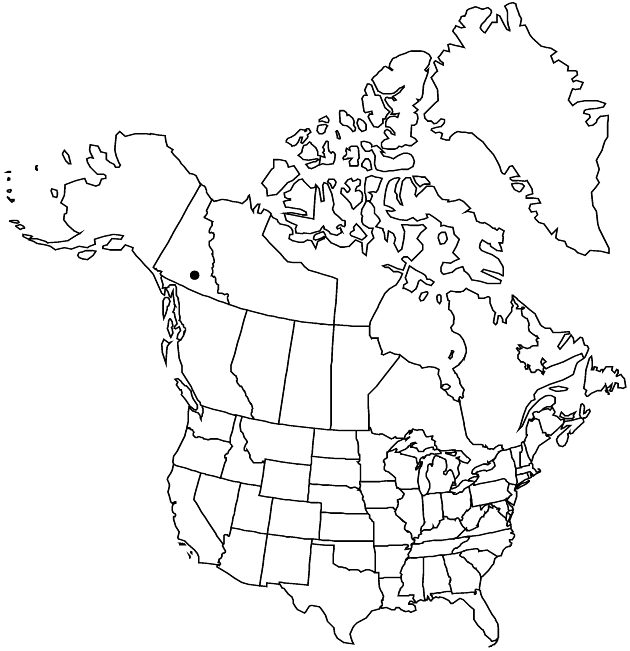Nestotus macleanii
Sida 21: 1651. 2005.
Stems 2–8 cm. Leaves linear, 3–16 × 0.3–1 mm, margins sometimes ciliate, midnerves raised abaxially, with 2 lengthwise, parallel furrows, apices minutely mucronate, faces glabrous, sparsely stipitate-glandular. Peduncles distally stipitate-glandular. Involucres 6–9 × 5–9 mm. Phyllaries mostly green, linear to narrowly oblanceolate, 4.3–7.6 × 0.7–2 mm, evidently 1-nerved, a pair of collateral nerves often weakly evident, sparsely hairy and/or stipitate-glandular. Ray florets 7–11; laminae 6–11 × 2.7–5 mm, tubes stipitate-glandular. Disc florets 14–18; corollas 5.2–7.3, lobes 0.9–1.6 mm; style-branches 1.4–2.5 mm, appendages 0.7–1.2 mm. Cypselae 2–3.7 mm, densely hairy; pappi of ± 50 bristles.
Phenology: Flowering late spring.
Habitat: Rocky slopes, grasslands, and river bluffs
Elevation: 400–900 m
Discussion
Of conservation concern.
Nestotus macleanii grows in the Yukon River drainage.
Selected References
None.
